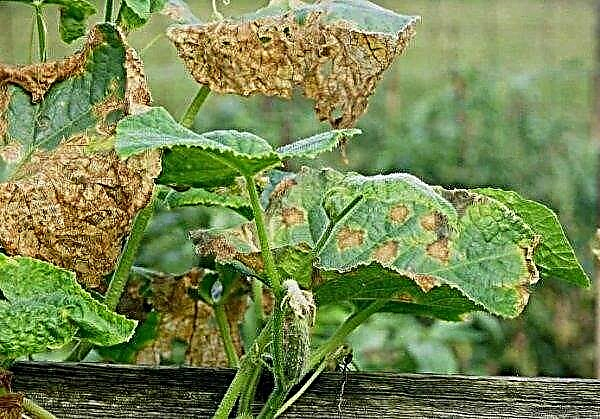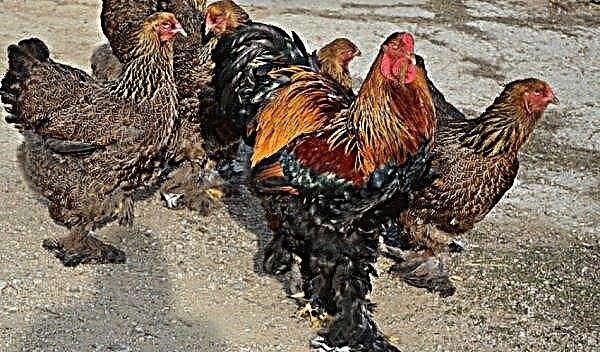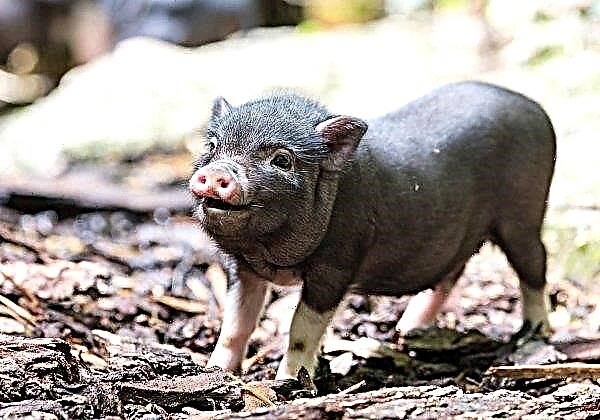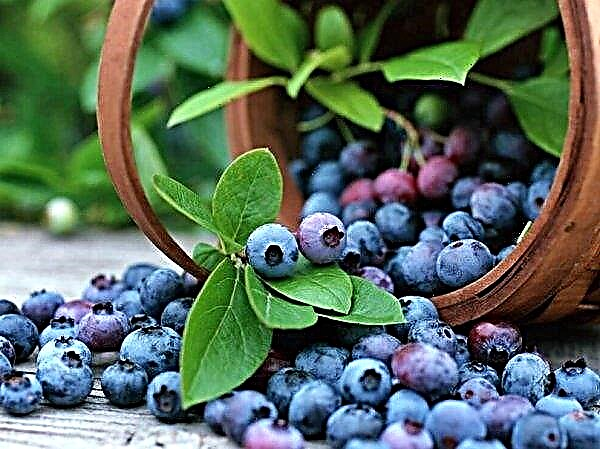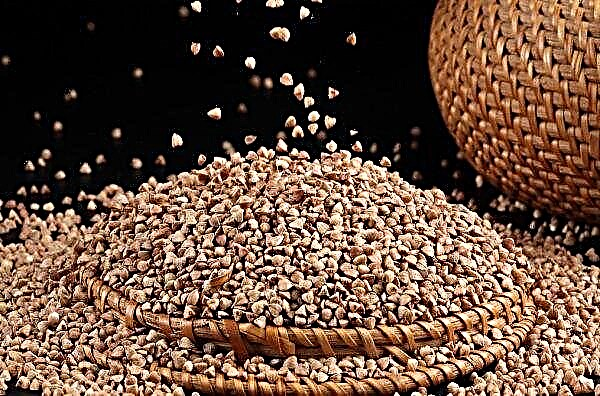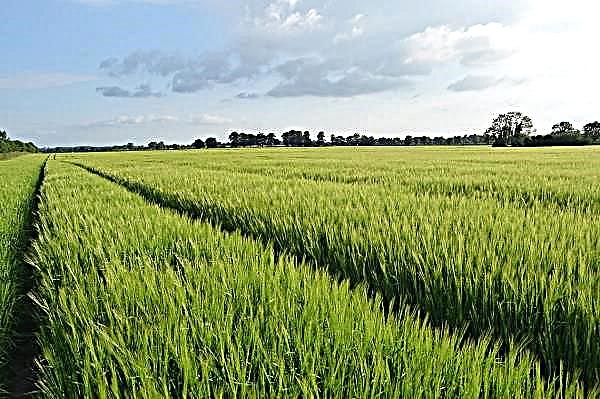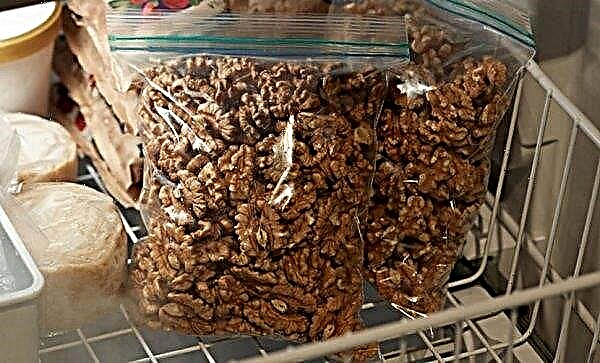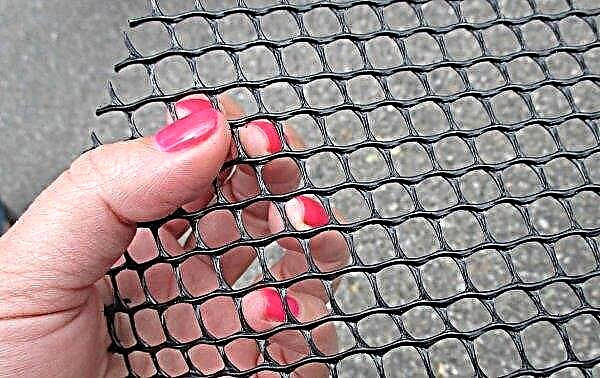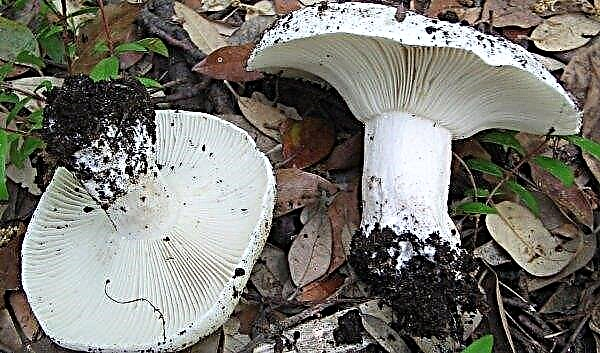Sargent Hydrangea is an ornamental shrub brought to the United States from East China, named after the American botanist Charles Sprague Sargent. Due to its exotic appearance, it is perfect for growing in summer cottages, both in single plantings and in combination with other flowering perennials. How to care for this flower and what characteristics it has - later in the article.
Description
Sargent hydrangea is a perennial deciduous shrub up to 3 m high and about 2 m wide. Shoots are strong, vertically growing, covered with spiny pile, with a brown peeling bark. The annual growth is 20–25 cm. The roots are not deep, they grow very wide.
The leaves are large, up to 30 cm long, ovoid in shape, have small notches along the edges, grow on petioles up to 11 cm long, saturated green. Inflorescences are flat umbrella, up to 20 cm in diameter. The flowers are light purple. The flowering period lasts from July to September. The fruits are small, brown, elliptical.
Winter hardiness
Sargent hydrangea belongs to the frost-resistant varieties. It withstands temperatures up to -23 ° C. Despite this factor, it is recommended to shelter the flower for the winter, especially young shrubs. Thanks to such manipulations, the likelihood of lush flowering in the summer increases.
Important! The fruits of Sargent hydrangea rarely ripen, mainly in warm regions.
Flower planting
The process of planting hydrangeas should be taken seriously, since the growth, development and flowering of plants depends on this. It is necessary to choose the most suitable place for decorative culture, to plant seedlings, following the advice of experienced specialists and taking into account the preferences of the flowers themselves.
Site selection and preparation
Sargent hydrangea is best planted in well-lit areas protected from wind and drafts. It is desirable that the lighting be diffused, because from direct sunlight, burns on the leaves may appear. Penumbra is also suitable.

The soil should be fertile, light, loamy, well-permeable to water, moist, with a slightly acidic or acid reaction. You can’t plant culture on heavy, dry, clay and alkaline lands. If, after all, the soil is not loose enough, it is recommended to install drainage in the landing pit.
Did you know? All parts of the hydrangea plant contain the poisonous substance cyanogenic glycoside.
Landing rules
Planting seedlings of hydrangea Sargent is carried out according to the following scheme:
- Planting a crop is recommended in spring (before budding) or in autumn (after falling of leaves).
- You need to choose seedlings aged 2-3 years.
- Dig a hole 60 cm deep and 50 cm wide.
- At the bottom of the pit, put drainage with a layer of 5-10 cm from broken brick, gravel or expanded clay.
- Pour fertile land from above, making a tubercle.
- Set a sapling vertically on an elevation, evenly spreading the roots in different directions.
- Sprinkle with remaining soil, tamp.
- The root neck should be at ground level.
- Pour 2 buckets of water on top of 1 plant.
- Cover the trunk area with mulch from peat or coniferous bark.
Plant care
After planting seedlings in a permanent place, you need to establish proper care for the plants. It consists of regular watering, fertilizing, loosening the soil, removing weeds, mulching, forming a crown, warming for the winter, and preventing diseases and pests. All these measures do not require much labor and time, but they directly affect the further growth and formation of shrubs.
Watering
Sargent Hydrangearequiring constant watering. They should be at least 5 times per season. In case of lack of water, plants may discard flowers or not bloom at all. Since the root system of shrubs is very close to the surface of the earth and grows wide, to retain moisture it is necessary to mulch the area around the trunk with a thick layer of peat or sawdust.
Fertilizer fertilizer
Sargent hydrangea is fed several times during the season. The first is carried out in mid-spring using 15 g of potassium sulfate, 25 g of superphosphate and 15 g of urea per 10 l of water. To them, you can add the infusion of mullein or a solution of chicken droppings with a calculation of 1:10. The following is repeated after 2 weeks. Before and during flowering, 60–70 g of superphosphate and 50 g of potassium sulfate diluted with water per plant are added.

Pruning
Trimming shrubs of hydrangea of Sargent is recommended to be carried out every year in the spring. It consists in the removal of old inflorescences, dry, diseased and damaged branches. Also, to maintain plant health, it is advisable to cut the shoots in the fall (before shelter for the winter).
Important! All chemicals must be used strictly following the instructions that accompany them.
Winter preparations
Hydrangea Sargent in winter from severe frosts can freeze. To avoid this, it is recommended to prepare shrubs for wintering.
This procedure is as follows:
- Before night frosts begin, the earth around the flowers needs to be loosened shallow (so as not to damage the roots) and spud;
- Cover the trunk area with a thick layer of mulch from peat, sawdust, straw, dry leaves;
- wrap the ground part of the bushes (shoots) with breathable covering material, install a frame of fine metal mesh around, fill the free space with dry leaves, cover with a film or a piece of roofing material on top.

Breeding
Basically, Sargent hydrangea propagates by dividing bushes, branches and cuttings, since it rarely gives fruit (seeds). All methods give very high results.
Briefly about each of them:
- cuttings - the most common method. To do this, you need to prepare cuttings of 4-5 buds each, 7-10 cm long, in spring during pruning of strong shoots. Soak the cuttings in a weak Kornevina solution. Prepare small containers with nutrient soil. Stick the cuttings to a depth of 2 buds, pritenit, regularly water;
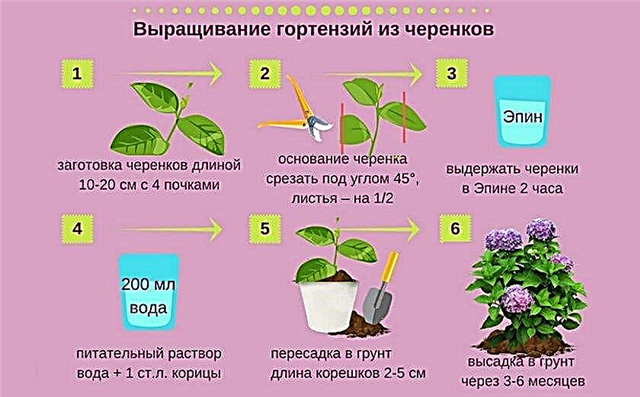
- bends - make a shallow furrow around the bush under the crown. Bend the lower shoots to it, pin them to the ground, sprinkle them on top of the ground, leaving the tip on the surface at an angle of 45 °. Constantly water until completely rooted;
- bush divisions - Dig up an adult plant completely with the root system. The roots are carefully divided into several parts. Each of them should be planted separately in a prepared place. Water regularly.

Diseases and Pests
If Sargent hydrangeas provide proper care, then it will become resistant to diseases and pests.
Did you know? In Buddhist culture, on the birthday of the Buddha, the temple is decorated with hydrangea flowers.
Otherwise, the decorative culture may succumb to the influence of such "enemies" as:
- gray rot - a fungal disease characterized by the appearance of a gray coating on the leaves and leaving uneven holes on them. At the first sign, you need to remove the infected leaves and burn them. You can also use a 1% solution of Bordeaux fluid or the drug "Fundazole";
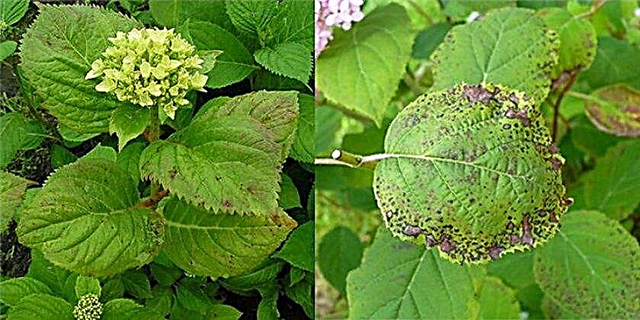
- common cancer - a viral disease, the symptoms of which are brown spots on the leaves and stems, on the other hand ulcers form. There is no cure for this ailment. It is necessary to destroy the affected areas or the entire plant;

- chlorosis - mainly appears during planting on calcareous soil. Manifested by yellowness and drying of the leaves, while the veins remain green. For treatment, you need to acidify the soil with peat or aluminum sulfate, and in case of iron deficiency, use a solution of iron sulfate (2 g per 1 liter of water);
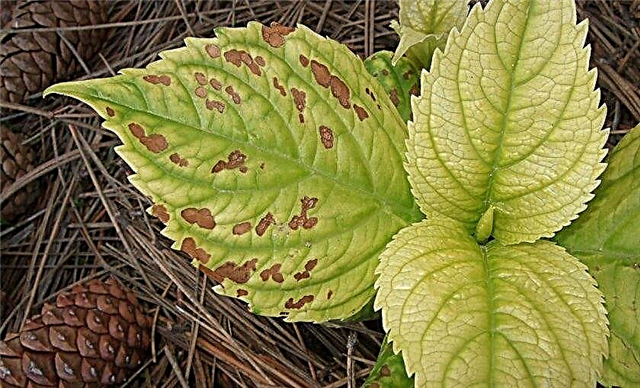
- powdery mildew - occurs with high humidity in the form of yellow-green spots on the foliage. Soon the leaves fall and the plant dies. It is necessary to fight by removing and burning infected parts of shrubs, spraying with Fitosporin B or Topaz preparations;
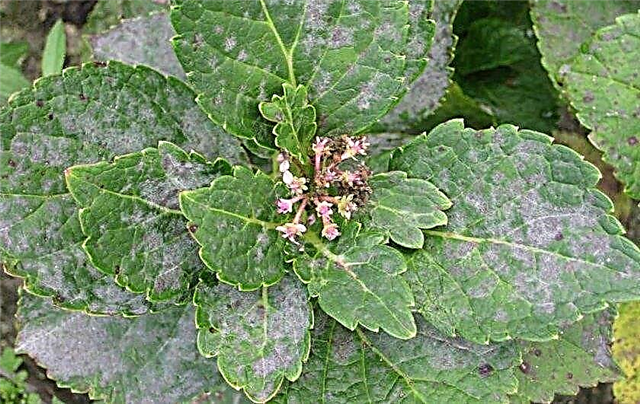
- aphid - a small insect sucking sap from plants. In large quantities can destroy the bush completely. In case of minor damage, wash the decorative culture with soapy water or from a hose under strong pressure. In severe cases, you need to use the insecticides "Bison", "Spark", "Acarina";
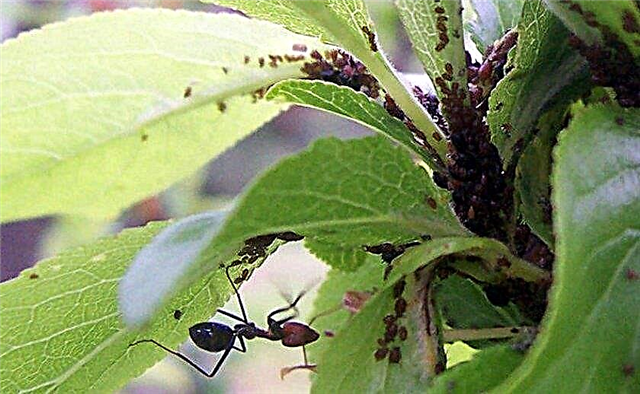
- mite - sucking pest that appears in hot weather. It can be recognized by the thin web that appears on the leaves. As a result, foliage curls and falls. At the initial stage, you can do with a soap solution. Later, the preparations “Akarin” and “Lightning” will help;
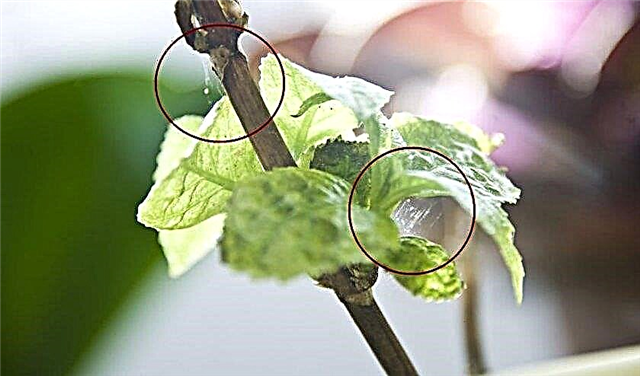
- gall nematode - a microscopic worm that damages the hydrangea root system and penetrates plant trunks. It appears in the form of red galls on the roots and at the base of the stems, which eventually begin to rot. Chemical preparations "Actofit" or "Fitoverm", introduced into the soil before planting seedlings, will help to cope with this pest;

- slugs - occur during dense plantings of shrubs. Parasites eat up the leaves, tips of young shoots and pose a great threat to young plants. They can be collected manually, or you can use the tool "Molluscocide".
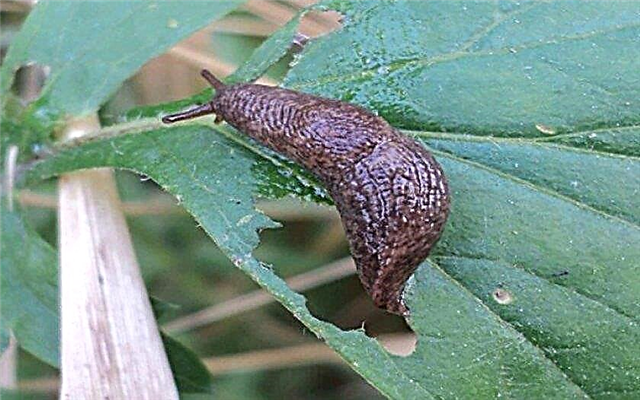
Sargent Hydrangea is ideal for creating floral arrangements in landscape design. To preserve the decorative properties of this crop, it is necessary to organize the most optimal conditions for it and regularly monitor the condition and flowering of shrubs.











